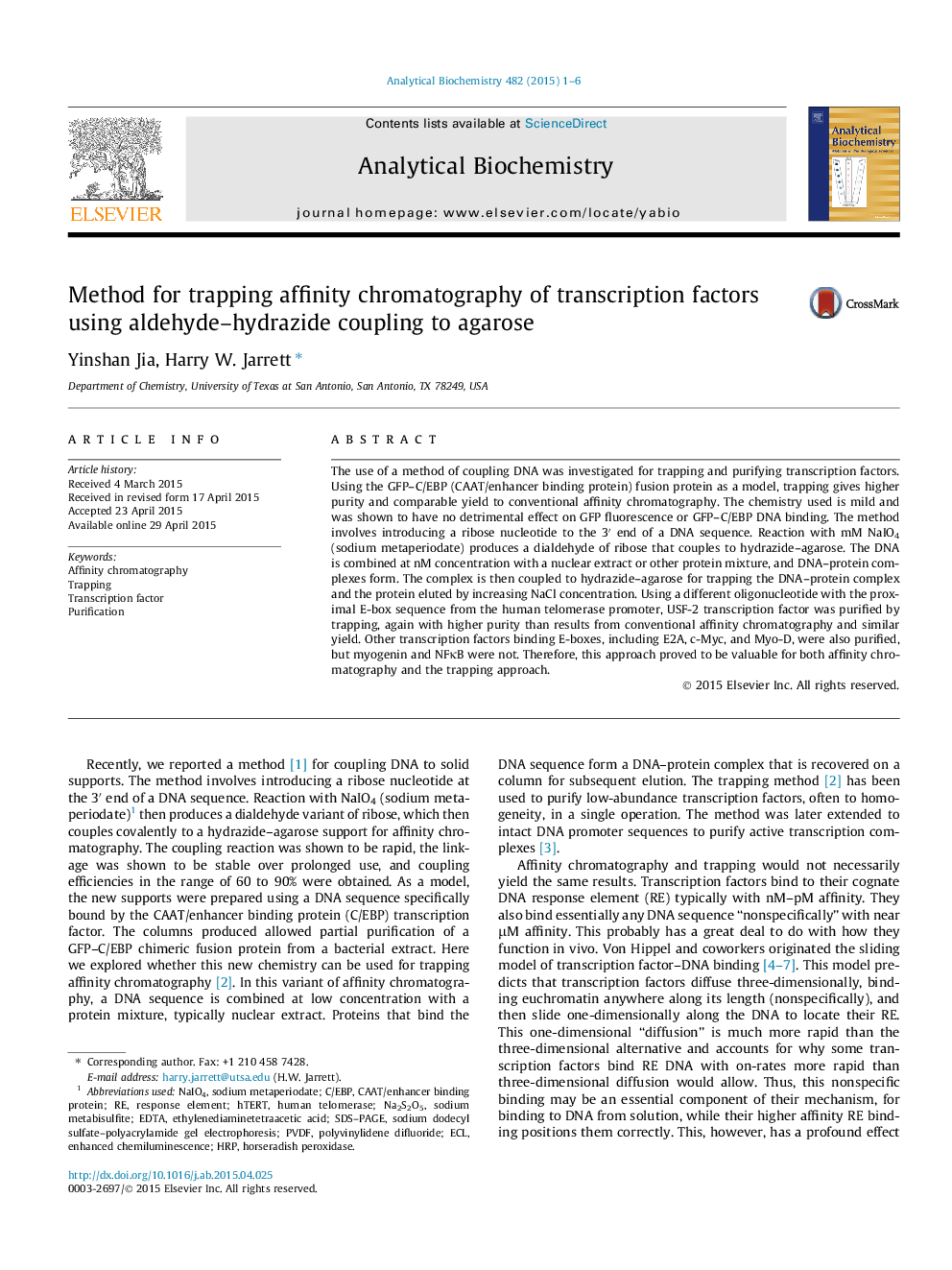| Article ID | Journal | Published Year | Pages | File Type |
|---|---|---|---|---|
| 1173311 | Analytical Biochemistry | 2015 | 6 Pages |
The use of a method of coupling DNA was investigated for trapping and purifying transcription factors. Using the GFP–C/EBP (CAAT/enhancer binding protein) fusion protein as a model, trapping gives higher purity and comparable yield to conventional affinity chromatography. The chemistry used is mild and was shown to have no detrimental effect on GFP fluorescence or GFP–C/EBP DNA binding. The method involves introducing a ribose nucleotide to the 3′ end of a DNA sequence. Reaction with mM NaIO4 (sodium metaperiodate) produces a dialdehyde of ribose that couples to hydrazide–agarose. The DNA is combined at nM concentration with a nuclear extract or other protein mixture, and DNA–protein complexes form. The complex is then coupled to hydrazide–agarose for trapping the DNA–protein complex and the protein eluted by increasing NaCl concentration. Using a different oligonucleotide with the proximal E-box sequence from the human telomerase promoter, USF-2 transcription factor was purified by trapping, again with higher purity than results from conventional affinity chromatography and similar yield. Other transcription factors binding E-boxes, including E2A, c-Myc, and Myo-D, were also purified, but myogenin and NFκB were not. Therefore, this approach proved to be valuable for both affinity chromatography and the trapping approach.
